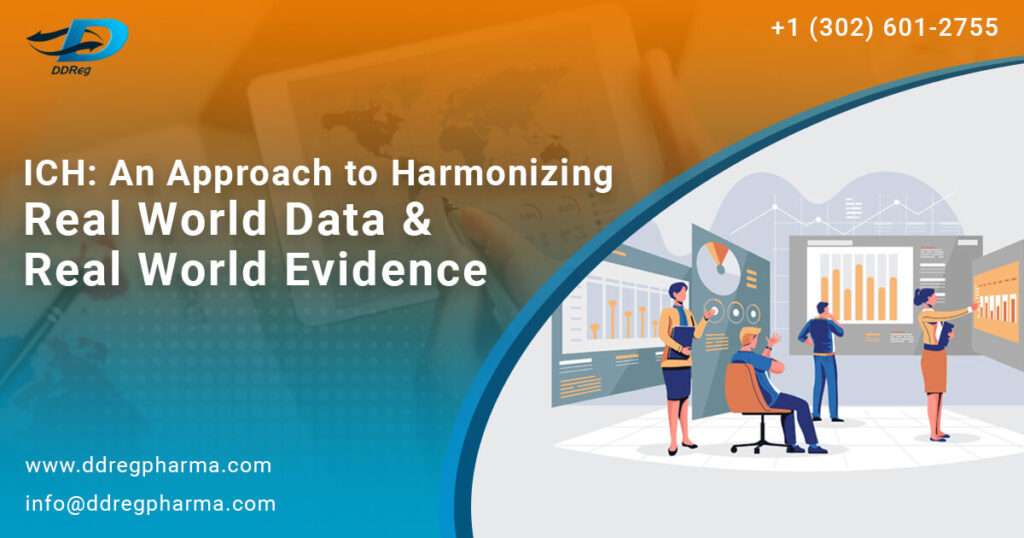The use of real-world data (RWD) and real-world evidence (RWE) in Life Sciences and Pharma is significantly gaining recognition for the value it brings in making enhanced regulatory decisions. The evaluation of pharmaceuticals throughout their development and lifecycle is a complex process that requires robust evidence to ensure their safety and effectiveness. Traditionally, randomized clinical trials (RCTs) have been the gold standard for generating pre-authorization evidence. However, the role RWD and RWE in regulatory decision-making is evolving as regulatory agencies recognize the importance of utilizing RWE in evaluating pharmaceuticals, particularly when assessing their risk-benefit/safety profile. Nevertheless, challenges exist due to the lack of standardization.
Addressing the Challenges
To address the challenges, the International Council for Harmonisation of Technical Requirements for Pharmaceuticals for Human Use (ICH) has published a Reflection Paper suggesting a strategic approach. The objective is to integrate RWE into regulatory submissions and facilitate timely decision-making.
The paper focuses on several key issues:
- Standardising Terminology: Developing common operational definitions for RWD and RWE is essential to ensure consistency and clarity in their usage. Harmonizing terminology would reduce knowledge gaps and promote access to innovative medicines.
- Scope and Data Sources: Specifying the scope of RWD and RWE is crucial for understanding their applicability. Identifying potential data sources that can contribute to generating high-quality evidence is essential for robust evaluations.
- Assessment Principles: Establishing assessment principles for evaluating the quality, reliability, and relevance of RWD and RWE in regulatory decision-making is necessary to ensure the credibility of the evidence used.
- Metadata Guidelines: Creating a core list and guidelines for metadata usage in RWD and RWE studies can facilitate data integration, sharing, and understanding, promoting transparency and interoperability.
- Protocol and Report Formats: Agreeing on common principles for the formats of RWD/RWE study protocols and reports submitted to regulatory agencies is important to ensure consistency and completeness of the information.
- Study Transparency: Promoting transparency by encouraging the registration of study protocols and reports in publicly available registries enhances access and visibility of RWD/RWE studies, facilitating their evaluation.
- Best Practices for Data Quality: Future guidelines could prioritize addressing best practices for ensuring data quality in RWD, including data collection, validation, and management. This would further strengthen the reliability and validity of RWE.
- Data Standards for RWD: Considering the development and implementation of data standards can ensure consistency, interoperability, and comparability of RWD across different sources and studies, enabling more robust analyses.
- Study Design and Data Analysis: Addressing the appropriate application of study designs and data analysis methods in RWD/RWE studies is essential to ensure the robustness, validity, and reliability of results.
The Objectives and Approach
The main objective of the efforts is to enhance the quality of real-world evidence, ultimately contributing to better-informed benefit and risk decision-making for pharmaceuticals by regulatory agencies. To achieve this, international collaboration is advocated by the International Coalition of Medicines Regulatory Authorities. Common definitions and best practices should be established to promote consistency and address current gaps.
The proposed approach for harmonization includes several steps, which may be reassessed before initiation. These steps include standardizing terminology, establishing assessment principles, developing protocols and report formats, promoting study transparency, addressing best practices for data quality, developing data standards for RWD, and ensuring appropriate study design and data analysis.
The paper also highlights the need for stakeholder involvement and proposes a public consultation process based on lessons learned from other guidelines. The goal is to improve the efficiency and alignment among regulators, industry, patient advocacy groups, and other stakeholders throughout the lifecycle of medicinal products. The proposal aims to RWE into submissions for medicines approval, enabling timely decisions, addressing medical needs, and ensuring the safe and effective use of medicines. It also mentions existing initiatives such as the FDA’s RWE Framework and Health Canada’s efforts to optimize RWE use. These initiatives, along with the proposed ICH guidelines, can work together and complement existing guidelines. The passage emphasizes minimizing duplication and leveraging knowledge from previous projects. It highlights the importance of leveraging relevant expertise and suggests a long-term plan with a stepwise approach for harmonization, terminology development, and best practices related to RWD and RWE.
Conclusion
The use of real-world data and real-world evidence in the evaluation and lifecycle management of pharmaceuticals is demonstrating its importance. While traditional RCTs remain crucial, RWD and RWE can provide valuable evidence in certain circumstances. However, challenges related to standardization and data quality exist. The proposed approach by the ICH, as outlined in the Reflection Paper, aims to address these challenges by promoting international collaboration, harmonizing terminology, establishing guidelines, and enhancing the quality and applicability of RWE. Ultimately, this will contribute to informed decision-making by regulatory agencies and benefit patients by ensuring the safe and effective use of medicines.
References and Further Reading

